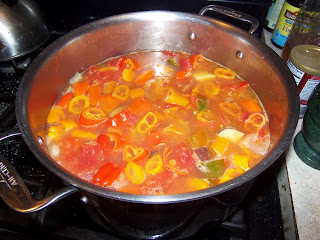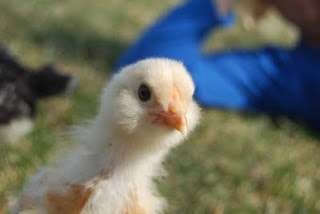Over the past week, I've heard a common theme in a variety of non-similar situations from crowds who seemingly have not much in common. Maybe as the holiday season picks up or as I find myself locked into a maddening schedule of commitments, I am just more intune. But the ever-present idea that I heard over and over this week was one of simplicity.
The first, and perhaps least surprising, place this week in which I heard a message of simplicity was at my Wednesday night yoga class. As we stretched out our stress-ridden muscles, our instructor spoke about letting go of internal stress, of avoiding meaningless holiday stress, of just enjoying life, being in the moment, being simple, and --in a sense--being free. On the car ride home, Andy and I talked about ways that we could incorporate the sereneness that presented itself with that discussion, in that moment, throughout our winter.
Days later, we attended our niece's birthday party. A different crowd for sure -- but amidst the bustling children and cake, I overheard a conversation that resonated the same idea with me. A friend of the family is moving to New Mexico. Because of that, a major rummage sale was had, and a major epiphany delivered itself. The couple moving talked about how they realized how pointless
stuff was -- how they never considered themselves people who were very into
stuff, but how much they had accumulated in such a short amount of time, and then how little it sells for, and how letting go of it really has no negative effect. In fact, to them, it felt a bit cleansing -- freeing.
And then, that evening, at a friend's dinner party, among a group of bicultural folks, who passionately discussed Mexican, South American, and American politics, the same idea emerged. This time, in terms of food, but nonetheless, it was one of simplicity. One of our friends reminisced about his days in Mexico, before NAFTA and before Wal-mart began its destruction in his hometown, when his mother could go to the market, gather a basket of simple foods, bring it back and cook for his large family for days. We don't need to line our cupboards and shelves with endless cans and boxes of foods which we'll most likely never eat, yet we do.
At the same time, a facebook friend and former classmate started a blog called
Naturally Adventurous in which she chronicles her experiences following the principles of a book entitled
7: An Experimental Mutiny Against Excess. The first step of this is eating only 7 foods for a month. Why is she doing this? In her words, " Life has gotten so busy and distracting that I
find myself with little time to, well, actually live. I feel
disconnected and stressed and need to set the reset button...I am
hopeful that this experiment will provide the opportunity"
These four separate instances, all different, but with a similar message has made me take a good, reflective pause. Why do we as humans feel the need to consume
so much? Food. Toys. Trinkets. Gadgets. Clothing. DVDs. Hair products. Lotions and creams. Countless kitchen gadgets that serve only one purpose. And, how many of us make the connection between all of this
stuff and the ever-rising power of corporations? When will we see that with Wal-mart and the other big box shops we lose small-business, mom-and-pop flavor, and we lose the ability to truly keep our money localized? When will we realize that the food we buy impacts so many facets? Workers' conditions. The environment. Immigration. Our bodies. Our health.
What we buy and don't buy matters.
Today, I felt a bit inspired. With the rain ruining any chance of outside work, I grabbed some food and began a cooking frenzy. A dozen pluots from last week's CSA box were looking like a day away from decay. So, I made some jam. I didn't have a few ingredients, but I didn't go buy any. I scavenged through the cupboard to find something suitable to use instead. My husband whipped up a good, fall soup using escarole, onions, carrots, herbs, and beans. I bagged up clothing that I haven't worn in a while to take it to Goodwill. And I talked to Andy about trying to give Christmas gifts this year that are meaningful and not just more
stuff that our family and friends will have to figure out what to do with until the inevitable day this trinket and that one end up getting sold for a nickle at a rummage sale.
And so, these are my reflections today. As the school week winds back up and commitments continue to present themselves and the holiday spirit starts to infect everyone around me (including myself), I hope I can resist the temptation to become unaware and to continue working towards living simply and presently.
 Yesterday, in my blog post about chocolate-covered peanut butter balls, I mentioned that I don't get too into baking for the holidays. Yet, here I am, about to write about another holiday sweet. Today's delight is a bit healthier. It's entirely vegan and raw. I'm writing about date balls!
Yesterday, in my blog post about chocolate-covered peanut butter balls, I mentioned that I don't get too into baking for the holidays. Yet, here I am, about to write about another holiday sweet. Today's delight is a bit healthier. It's entirely vegan and raw. I'm writing about date balls!













































